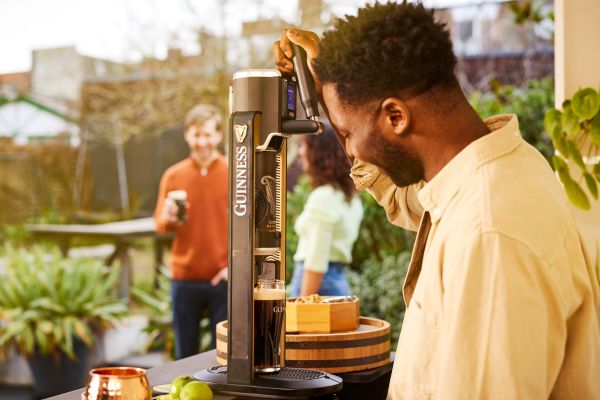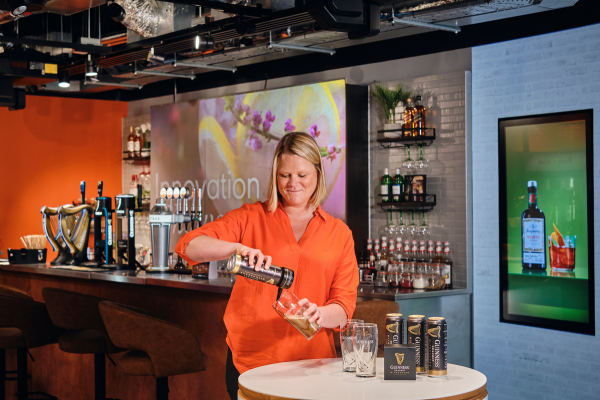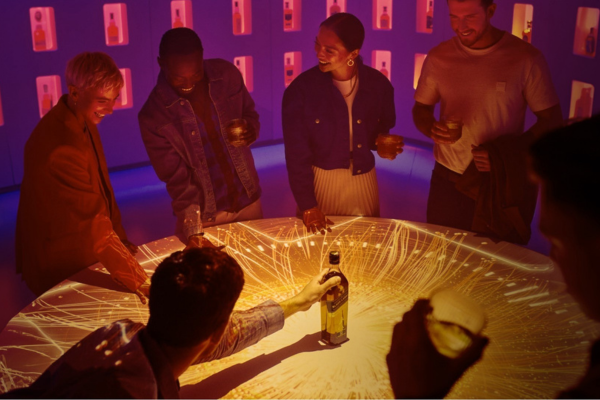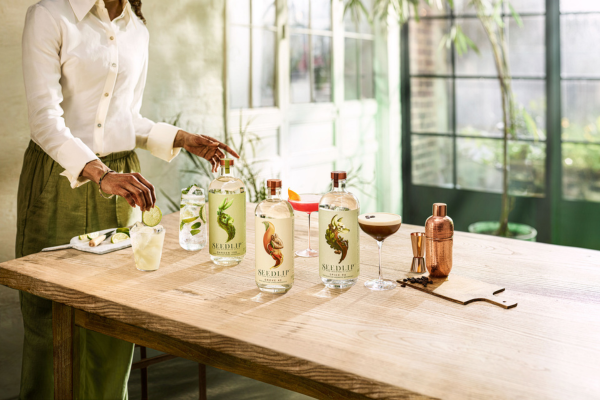
24/07/2024 Insights on innovation and sustainability from Diageo’s leadership
Innovation at Diageo is not just a goal; it's a journey marked by continuous learning, adaptation, and a relentless drive to push boundaries. From the rise of Guinness MicroDraught to the creation of low-alcohol alternatives like Guinness 0.0, Diageo’s Chief Innovation Officer Mark Sandys has played a pivotal role in steering these groundbreaking developments. In this interview, we explore how deep-rooted experience, technological advancements, and a commitment to sustainability converge to shape the future of this global beverage leader.
Mark, your ascent from a graduate trainee to Chief Innovation Officer at Diageo reflects a remarkable journey within the company. How has your deep-rooted experience shaped your approach to spearheading innovation across Diageo’s diverse portfolio?
I have been lucky enough to work for Diageo for 27 years now, and have lived in 5 different countries across that time, in emerging markets and developed, in operational marketing roles, and in global roles. This has given me a broad perspective – I am a big believer that getting out of your comfort zone is critical to ensure you keep learning. The breadth of experience is also critical in this role which covers all categories and all countries for Diageo. In Diageo we have an incredible depth of knowledge about our categories through our brewers, distillers, and R&D teams – often this knowledge is the source of our Innovation. That knowledge is at its best when it is put together with consumer understanding – especially when we forecast how people will socialize in the future.
Given your deep connection to Guinness, how did your team's approach to innovation influence the development and success of Guinness MicroDraught technology?
Guinness is unlike any other beer – and therefore we have to create innovation that only Guinness can do. Ever since the late 1950s when Guinness Draught was first created, Guinness has been innovating with dispense. This has seen the launch of Guinness Extra Cold, the widget in cans of Guinness, and Guinness Surger which have each allowed Guinness to reach new occasions and new consumers. Guinness Micro-Draught is the latest in this pipeline – using new ultrasound technology to pour the perfect pint of Guinness in locations that would not be able to have a full keg set up. The quality of the beer is incredible and it has allowed Guinness to reach a much broader range of bars, restaurants, and events that would not be able to have a full keg set up.

Image: Guinness Microdraught – an innovative way to enjoy draft Guinness at home.
The introduction of Guinness 0.0 has been hailed as a significant achievement in the low-alcohol sector. Could you elaborate on the pivotal breakthroughs during its development and the meticulous processes involved in ensuring it upholds the iconic Guinness quality?
It took more than two years to develop Guinness 0.0 to ensure that it lived up to the most iconic beer brand in the world. It is not easy trying to replicate the taste and experience of Guinness – and when we first launched in December 2021, we even had to do a product recall at one stage to ensure that the quality was of the highest possible standards. That commitment to quality has paid off with Guinness 0.0 now one of the fastest growing non-alc beers in the world, recruiting new consumers into the Guinness brand every week.
Products like NitroSurge and Guinness MicroDraught have redefined the draught beer experience. What were the inspirations and technological innovations behind these developments, and how have they been received by consumers?
The inspiration for Guinness Nitrosurge came from watching consumers’ behavior during COVID-19. When pubs were shut or restricted, sales of Guinness at home soared, and there was a huge amount of interest in how to pour the perfect Guinness at home. We even saw consumers using electric toothbrushes and jewelry cleaning machines to replicate the iconic surge and settle of Guinness. The GUINNESS NITROSURGE Device uses ultrasonic technology to break down the nitrogen in Guinness and give you a beautifully smooth two-part pour every time. When it first launched in Ireland there was incredible interest – within the first year, one in five households in Ireland had one. It has recently been awarded Innovation of the Year by Tesco in GB and we have seen that it is recruiting new consumers into the Guinness franchise while creating a great experience.

Image: Guinness Nitrosurge
Can you share a project at Diageo that encountered unexpected challenges? How did the insights gained from that experience shape future successful innovations, and what strategies does Diageo employ to foster a culture of experimentation and resilience, ensuring that lessons from failures are constructively integrated into future projects?
Our Breakthrough Innovation team is the most experimental part of our business. Their role is to build new capabilities that Diageo can’t do today, that will drive transformational growth for the business. They do this by creating new ‘platforms’ for growth – rather than new products. For example, the team recently created the first-ever alcohol brand experience on the Apple Vision Pro platform and an online auction for a range of incredibly rare casks of Don Julio 1942. Their way of working is to explore a huge range of potential ideas under our strategic platforms, and test and learn through small-scale pilots as they gradually prove their viability.
Diageo’s commitment to sustainability is evident through initiatives in regenerative agriculture and eco-friendly packaging. What are some of the most promising innovations in these areas, and how are they being implemented across your global operations?
Sustainability is one of the main focus areas of the Breakthrough Innovation team – to find new formats and business models that reduce our carbon emissions. At Diageo we believe that viable sustainability innovation has to deliver a ‘triple win’, i.e. it has to be better for the climate, better for the consumer, and for Diageo. We can’t expect consumers to compromise on quality or appeal because of a sustainability benefit. We have a number of very exciting programs underway including the recent trial of the Bailey’s paper bottle, and also our global partnership with the Eco-spirits business. We are going to test and learn how to scale these, and we are going to partner closely with our retail customers to make a difference in the industry.
How is Diageo leveraging advancements in AI and data analytics to anticipate and respond to emerging consumer trends, and which upcoming trends do you find most promising for the industry?
Diageo is experimenting and scaling AI across a number of different use cases. Two live examples are:
‘What’s Your Cocktail’, ‘What’s Your Whisky’, and Diageo’s Flavorprint technology: Following the success of the ‘Journey of Flavour Tour’ at Johnnie Walker Princes Street and the ‘What’s Your Whisky’ platform, the latter of which has seen over one million consumers pass the experience, we recently launched ‘What's Your Cocktail’. Using ‘Flavorprint’, Diageo’s AI-powered technology that provides consumers with real-time beverage recommendations, consumers answer simple questions and in under 15 seconds will be recommended the perfect cocktail to match their flavor profile.

Image: Diageo Launches Breakthrough Innovation Team to shape innovation beyond new products.
‘Elli’, Seedlip Virtual AI Concierge: We’ve worked with the agency Voxly to explore new forms of brand interaction by creating a virtual AI chatbot on our Seedlip website. It can speak to consumers, offering cocktail suggestions, tasting notes, gifting advice, and information about the brand. The chatbot has led to an increase in engagement on the website and we have seen direct conversions as a result of interactions with the AI chatbot.
In both cases, we are building new capabilities and distinctive competitive advantage through our use of data.
How does Diageo approach the no/low-alcohol market, particularly with extensions of established brands? What strategies are employed to appeal to younger demographics like Gen Z and Millennials, and how do you innovate in this space with the rising popularity of agave alternatives, alcohol adjacents, and craft beverages? In light of forecasted growth, how does Diageo plan to expand its presence and offerings in this market, and are there specific regions or demographics being targeted?
The non-alc category is being driven by the growing trend of ‘wellness’ and consumers choosing to moderate. And while the non-alc category is still nascent, it is growing fast with strong growth potential and supports our positive drinking ambitions.
The non-alc spirits category is forecast to grow with a CAGR of 11% over the period 2022-2027 (source: IWSR). We first acted on this growth opportunity by acquiring Seedlip via Distil Ventures in 2016, and since then have gone on to launch Gordons 0.0, Tanqueray 0.0, and more recently Captain Morgan Spiced Gold 0.0, our first non-alc dark spirit. We hold the leading market share position in the three largest non-alc markets globally; the UK, USA, and Germany, and in Spain and Italy we hold 67% and 77% respectively - we are shaping the category.
We have a real strength in our liquid expertise: our liquids are not just moderating alternatives. They are premium drinks that deliver on taste and quality. The taste profile of our non-alc versions matches the taste profile of the trademark;
Our non-alc portfolio has enormous potential to grow across markets and occasions. 80% of Diageo’s current non-alc sales come from only five markets. We see a large opportunity for us to drive incremental share and drive recruitment in a broader range of occasions; Particularly daytime occasions where consumers love the experience of a non-alc ‘adult drink’.

Image: Seedlip, the world’s first distilled non-alcohol spirit.
Drawing from your extensive career, what advice would you offer to industry professionals aiming to drive innovation within well-established brands, particularly in the beverage alcohol sector?
My main advice is to be curious and to find different frameworks to focus this curiosity. Ideas can spark from lots of different areas – from your strategy, from your in-depth knowledge of the category, from observing consumers, or even from seeing trends in other categories like beauty or fashion. If you can bring together diverse groups of people to connect around these stimuli and create an environment where people feel confident to share ideas, without fear of failure, then great things can happen.
Conclusion:
Through the lens of Mark Sandys, Diageo's Chief Innovation Officer, it is evident that innovation in the beverage alcohol sector is a dynamic and multifaceted process. It requires a blend of historical knowledge, cutting-edge technology, and a deep understanding of consumer trends. As Diageo continues to lead with pioneering products and sustainable practices, the lessons and strategies shared offer invaluable insights for industry professionals aiming to drive innovation within established brands. His journey from a graduate trainee to a leader at Diageo underscores the importance of curiosity, resilience, and a willingness to embrace change.
In conversation with Malvika Patel, Editor and VP, Beverage Trade Network



